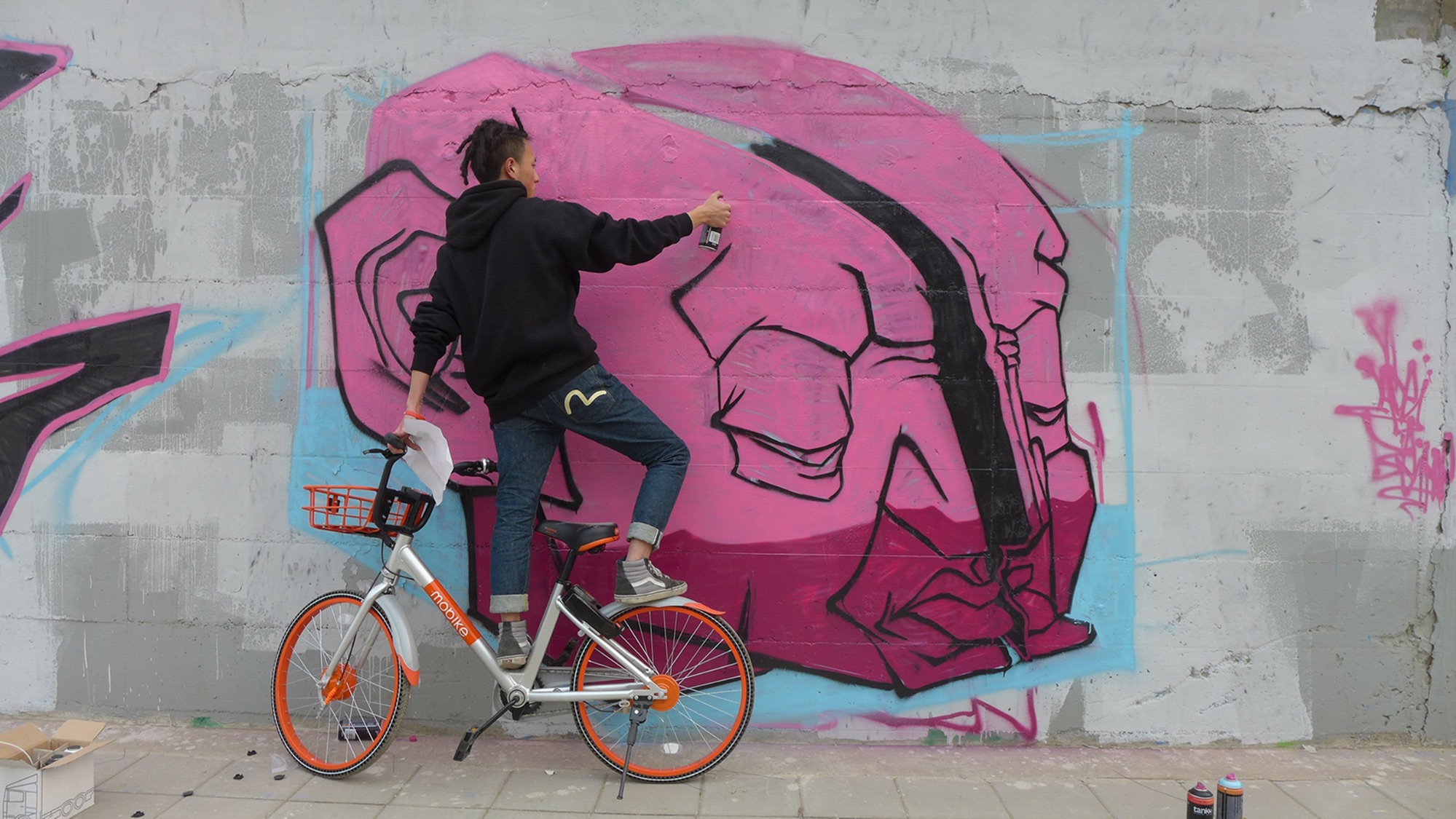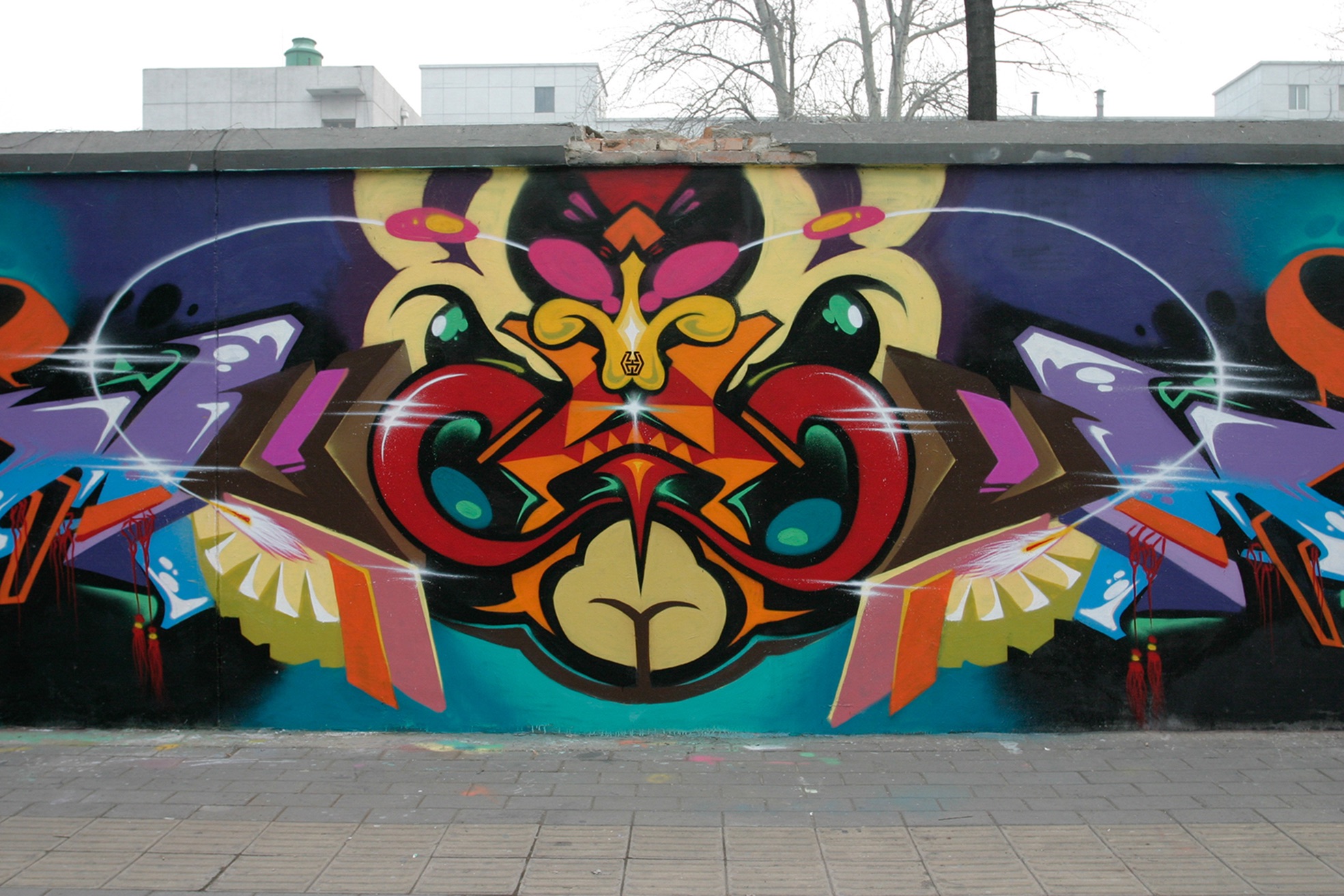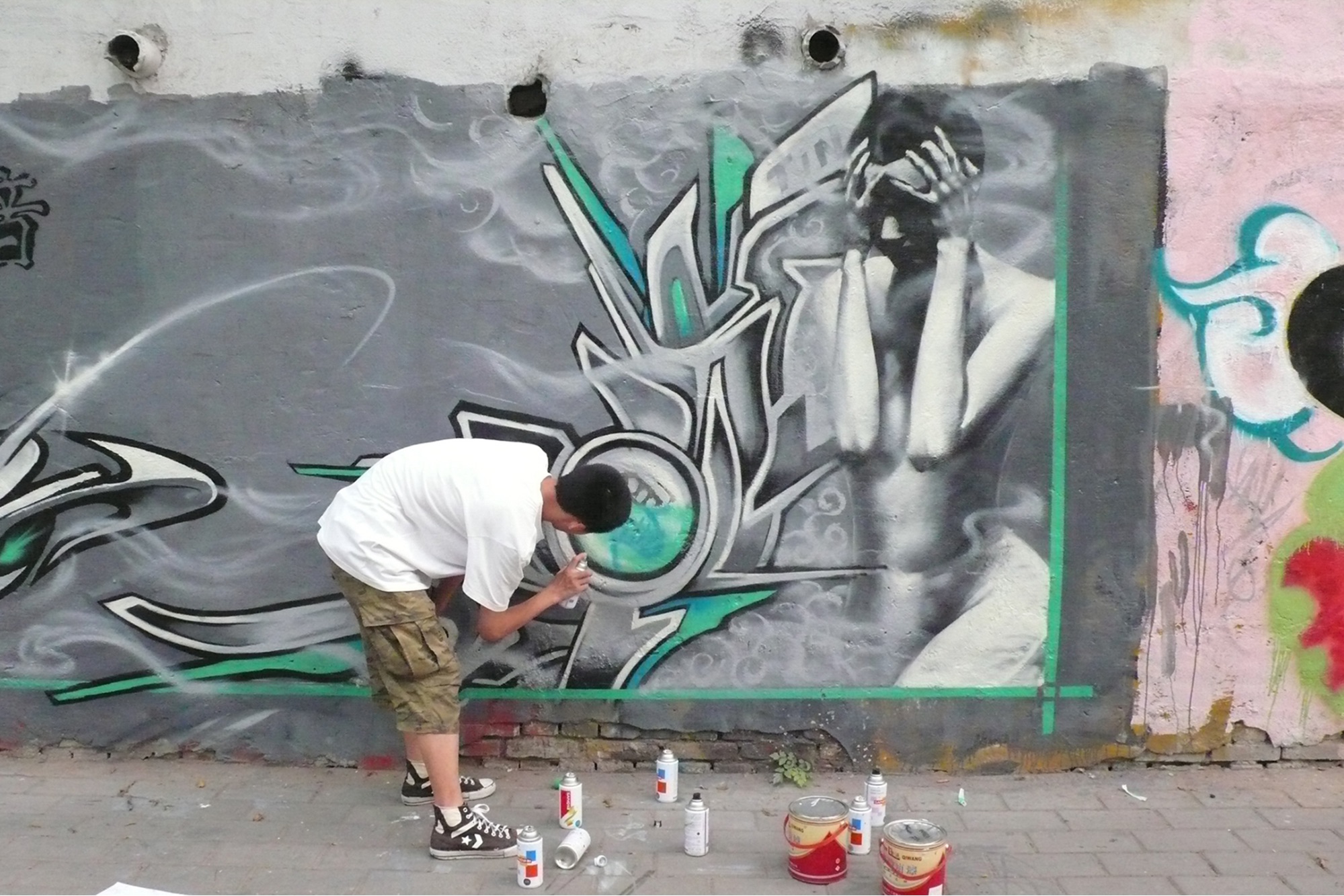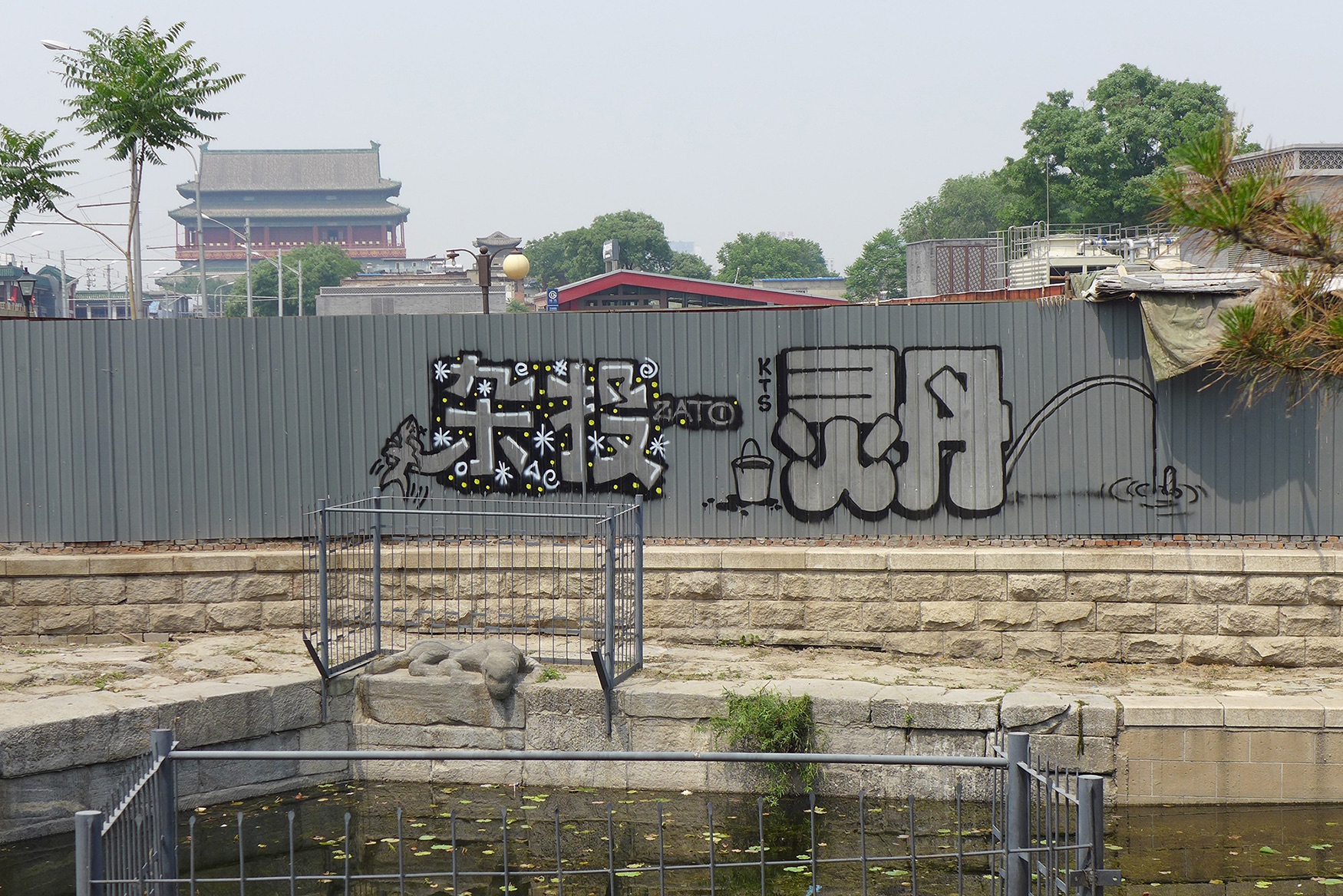Words on the street: ‘Beijing Graffiti’ examines street art in the Chinese capital
A new book examines Beijing's small but vibrant graffiti scene, via photographs and interviews with 25 of the city’s graffiti artists.

Public scrawlings have shaped Beijing daily life throughout much of the city’s contemporary history. At their most dramatic, politically-charged treatises known as “big character posters” came to line the city’s streets during the Cultural Revolution, where they sought to whip up the masses and publicly punish class enemies.
But that was then. A new collaborative book by Liu Yuan Sheng and Tom Dartnell documents the writing (and writers) currently adorning Beijing’s streets.
Beijing Graffiti contains interviews with 25 of the city’s graffiti artists, but equally engaging is the person that has spent much of the past two decades documenting them: Liu Yuan Sheng, whose photographs fill the book (Liu also appears in the 2012 documentary Spray Paint Beijing). The former editor of a state-run magazine, Liu first began using his spare time to take photos of Beijing’s graffiti in 2004, when he was in his 50s. His collection now spans more than 10,000 images.

As Dartnell points out, Beijing’s status as the country’s political capital — plus its vast surveillance network — makes most people think graffiti must be nonexistent. But the debate around whether or not graffiti constitutes an art form or a criminal offense — so prevalent in U.S. cities — is largely absent among the Chinese public, where graffiti’s “negative connotations have yet to register.” It perhaps follows that many Beijing authorities possess a similarly blasé attitude when catching graffiti artists in the act. Several artists note that fines are relatively small, and jail time tends to be rare. According to Dartnell, authorities even played a role in cultivating the city’s graffiti scene by encouraging students to paint celebratory images on designated walls in the run-up to the 2008 Beijing Olympics, giving graffiti writers a safe space to hone their skills.
Yet this sentiment is not shared by all. Featured graffiti writer Sbam observes, “Kids here like to say that it is ‘easy’ to paint in China, but when you get to count how many took the risk to paint a train or a subway, the numbers drop drastically. That, I think, tells you more honestly how ‘easy’ it is.” Another writer, Clock, similarly observes the disparities in opportunity that exist between Beijing-born graffiti artists and those from outside the city.

Indeed, what emerges throughout the book is that while the scene is small, and the widespread influence of hip-hop and U.S.-based graffiti artists are immediately apparent, it remains far from being unified. There is no underlying aesthetic ideal or political ideology, and even the purpose of graffiti art itself seems up for debate.
While Zhāng Dàlì 张大力, generally held as Beijing’s first graffiti writer, may be known for his subversive “AK-47,” tag which began appearing on Beijing walls in the early 1990s in critique of the country’s materialism and violence, the majority of the city’s currently active graffiti writers are rarely overtly political, and commercially commissioned projects appear to be common practice. Although this is partially attributable to China’s authoritarian politics, Dartnell is quick to assert that the long-held perception of the anti-establishment graffiti artist is somewhat of a cliché; at its heart, graffiti has always been a way for young people to have fun. The freedom of self-expression and the thrill of communicating to a mass audience that graffiti affords form common threads connecting the book’s otherwise diverse array of artists.

Yet, others do use the art form as means of getting more critical messages across. Featured writer Zato states that graffiti is his “way of waging war against the way Beijing is being changed from above,” a theme that is echoed in writer Biskit’s work commiserating the loss of several culturally significant Beijing neighborhoods.

Sbam even takes aim at those who appear to appreciate graffiti solely at face value: “Youth movements like graffiti are imported packages from the West and are usually embraced by young Chinese merely for their ‘coolness.’” Clock shares similar concerns: “The public doesn’t understand, and even many writers don’t understand what they’re doing. They just copy mechanically, unthinkingly.”

Despite this, there is also a certain optimism about the future of the scene. The art form has evolved since its initial introduction to the city: several artists are now opting to use Chinese characters rather than the Roman alphabet, and note how China’s aesthetic traditions and the difference in locally available materials have shaped their own styles over time. As Sbam observes, “China is a very dynamic country and here people embrace changes quickly. I don’t exclude that your next favorite writer will be Chinese.”

According to Zato, however, the scene is likely to remain small well into the future. For now, the real masters of Beijing’s wall space are the city’s illegal advertisers, “plumbers, air-conditioner repairmen, real estate salespeople, hookers or their pimps, document forgers and other crooks. Those are the real bombers in Beijing.”
Beijing Graffiti is available now from publisher Schiffer.





